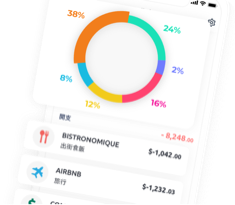Fresh graduates have gradually entered the workforce and are beginning to contribute 5% of their monthly salary to their Mandatory Provident Fund (MPF) accounts. Many people believe that MPF can only be withdrawn after retirement and, as a result, may not pay much attention to it.
However, the truth is that managing your MPF account properly and early on can lead to significant wealth accumulation through the power of compound interest. Therefore, fresh graduates should take their MPF accounts seriously from their first job onwards.
Is MPF Mandatory in Hong Kong?
According to the law, all employees between 18 and 64 years of age who have been employed for at least 60 days, whether full-time or part-time, must participate in an MPF scheme. The minimum contribution amount is 5% each from the employer and employee, with respective caps of HK$1,500. If an employee’s monthly income is less than HK$7,100, the employee is not required to make contributions. However, the employer still has to contribute 5% of the employee’s monthly salary.
Employees are entitled to a contribution holiday during the first 30 days of employment and the first incomplete salary cycle. In other words, many workers do not need to contribute to the MPF for the first two paychecks, but the employer will still contribute on their behalf.
According to statistics released by the MPFA in March 2022, 77% of the employed population in Hong Kong is covered by the MPF scheme.
Why is MPF Important?

MPF is a long-term investment closely related to retirement life and should be managed carefully. Since the implementation of the MPF system, the average rate of return of the funds after deducting expenses is 4.4%.
Assuming that you start working at the age of 23 with a starting salary of HK$15,000 and an average annual salary increase of 3.8% (based on the average of the past 10 years according to the Census and Statistics Department), according to the MPF accumulative benefits calculator provided by the MPFA, you can obtain the following benefits from the MPF upon retirement:
If the annual rate of return of the MPF remains at 4.4%, you can receive a total of HK$4.09 million (principal and interest) upon retirement at the age of 65. If your MPF outperforms the market and the rate of return reaches 8%, you can receive nearly HK$9.82 million upon retirement. However, if your MPF underperforms and the rate of return is only 2%, you can only receive about HK$2.5 million upon retirement.
Based on the average inflation rate of 3.2% over the past 10 years, HK$9.82 million, HK$4.09 million, and HK$2.5 million are only worth about HK$2.56 million, HK$1.06 million, and HK$660,000 today, which may not be sufficient to meet your retirement needs. You may still need savings and investments outside of MPF.
Nevertheless, it is clear that managing MPF properly can significantly enhance retirement funds. Young people have a high chance of receiving accumulative MPF benefits of millions of dollars after retirement. On the other hand, neglecting MPF will only make the already insufficient returns for retirement even more challenging.
What are the 5 types of MPF and their Risk Levels?
MPF can be divided into the following 5 categories, ranked from high to low risk:
- Equity funds: Equity funds have higher risks and potential returns. They invest in single regions, areas, or global stock markets, such as Hong Kong equity funds, Asia equity funds, and international equity funds. The fund’s performance in stock markets and currency exchange rates influence stock market fluctuations.
- Mixed-asset funds: Mixed-asset funds have medium-to-high risks and primarily invest in stocks and bonds to diversify risks—generally, the higher the proportion of stocks, the higher the risk.
- Bond funds: Bond funds have medium-to-low risks and invest in bonds or debt instruments issued by governments, banks, commercial institutions, or international organizations such as the World Bank. Returns mainly come from bond interest income or profits from buying and selling bonds on the market. Bond prices may fall during interest rate hikes, and factors like exchange rate fluctuations and credit ratings can affect returns.
- Guaranteed funds: Guaranteed funds have relatively low risks and offer guarantees such as the minimum return on capital for plan members. However, most have conditions such as failure to meet the required number of contributions, withdrawals, or plan conversion within a specified period that could render the guarantee void.
- Conservative funds: Conservative funds have relatively low risks and mainly invest in Hong Kong dollar assets such as short-term bank deposits and bonds. The goal is to earn returns equivalent to Hong Kong dollar savings deposit interest rates. Although the risk is low, it may fall behind inflation.
MPF Tax Deductible Voluntary Contributions
Apart from the mandatory contribution of 5% of their salary, employees can also make voluntary contributions to enhance their savings. These contributions can be divided into three categories: employee voluntary contributions, special voluntary contributions, and tax-deductible voluntary contributions.
Since the MPF is a long-term investment, even if an employee contributes an additional 1% of their salary each month, the effect of compounding interest can significantly increase their assets over time.
Use the Mandatory Provident Fund Calculator now to see how voluntary contributions can impact your retirement savings:
How to Allocate Your MPF Investment Portfolio?
MPF is a long-term investment that can last for decades. Young professionals with the time to withstand market fluctuations often choose equity or mixed-asset funds with higher returns. However, high returns also mean high risks, and employees should carefully consider their risk tolerance. Diversifying investments can reduce risk.
If no specific instructions are given, the fund will be managed according to the “Default Investment Strategy” (DIS), commonly known as the “lazy fund.”
To gain a deeper understanding of a fund’s background, investment performance, fees, and other details, you should read the Fund Fact Sheet or the MPF fund platform provided by the Mandatory Provident Fund Schemes Authority.
Fund Fact Sheet
Many people do not read the Fund Fact Sheet carefully when they receive it. However, the Fund Fact Sheet can help you understand important information about the fund when selecting MPF investment portfolios, including:
- Investment policy and objectives: Explains whether the fund aims to maintain capital or increase assets, allowing you to know whether the fund’s investment strategy meets your expectations.
- Fund size/asset value: Lists the fund’s total assets minus its liabilities.
- Fund type description: Briefly introduces the investment region of the fund and whether it belongs to the category of stocks, bonds, or mixed assets.
- Investment portfolio distribution: Uses charts to show the proportion of the fund’s investment in different categories of investment tools (such as stocks and bonds) and regions (such as Japan, Europe, and Hong Kong).
- Top 10 assets: List the top 10 securities that comprise the highest percentage of the fund’s net asset value, reflecting how the fund is deployed and its investment strategy.
- Risk indicator (or risk label): Reflects the potential risk and return of the fund by measuring the fund’s volatility over the past three years. Generally, the higher the value, the higher the potential risk and return.
- Fund expense ratio: The fund’s total expenses as a percentage of its assets will affect investor returns.
- Fund performance: Shows the return rate of the fund in 1 year, 5 years, 10 years, and since its launch.
- Commentary: Analyzes and evaluates the fund’s performance and market trends, explains the factors considered when deploying the fund, and helps you understand the market and make investment decisions.
MPF Fund Platform
The MPF Authority has established an MPF Fund Platform, allowing employees to quickly access basic information and the performance history of various funds. You can filter plans and fund categories and view important data such as the fund’s return rates over the past 1, 5, and 10 years and the current management fees and fund expense ratios.
As MPF is a long-term investment, short-term performance should not be the sole focus. If your goal is capital preservation, pay more attention to the 5-year and 10-year return rates to assess the fund’s stability.
- Fund Fees: When selecting an MPF scheme, besides focusing on the rate of return, it is essential to pay attention to the fund fees. Otherwise, choosing a fund with high fees may significantly reduce the actual returns earned. Through the MPF fund platform provided by the MPFA (Mandatory Provident Fund Schemes Authority), you can clearly compare the fees of different funds.
- Fund Size: Large fund size does not necessarily mean better performance. In many cases, smaller funds can outperform the market. This is because large market investors often buy or sell stocks in large quantities, and the same amount of investment returns a higher percentage for smaller funds, making it easier for them to outperform the market. Of course, these types of funds may also have higher volatility.
How to Manage your MPF in a Bear Market?
Due to political and economic factors, stock markets in China, the US, and Hong Kong have been highly volatile in recent years. So how should you manage your MPF investment portfolio during a bear market? There are two main strategies:
Stable Approach – Focus on hedging:
Switching from high-risk and high-return funds to a stable but lower-return combination to reduce losses during market downturns.
Aggressive Approach – Buy low:
Despite the market downturn, you can buy more fund units with the same monthly contributions, so some people expect to buy stocks with high risk and high returns at a lower price and earn more profits when the market rebounds.
Regular Review of MPF Portfolio
Employees should pay attention to and regularly review the performance and accumulated assets of their MPF funds. They should consider their risk tolerance to decide whether to change their investment portfolio and be prepared for any potential risks in advance. Be sure to seek a solution before there are significant market changes. Otherwise, if you find that your MPF performance is not as expected just before your retirement, you will regret not taking action earlier.
What is the “Employee Choice Arrangement”?
In 2012, the Mandatory Provident Fund Schemes Authority (MPFA) introduced the “Employee Choice Arrangement” (ECA), which is commonly known as the “Semi-Self-Selected” (強積金半自由行) scheme.
Under this scheme, employees can transfer the accrued benefits of the mandatory contribution portion of their MPF accounts to a self-selected MPF scheme once a year. However, employees cannot move the employer’s contribution portion. The new contributions made by employees will continue to be deposited into the original scheme until the following year’s transfer opportunity.
How to Handle MPF when Starting a New Job?
For new graduates, job hopping may be more frequent, and it’s important not to forget to handle the old company’s MPF account. If there are no instructions after changing jobs, the accumulated benefits of the old company’s MPF plan will be transferred to the personal account and continue to be invested.
After changing jobs several times, you may have multiple MPF personal accounts. Employees can choose to manage multiple MPF accounts simultaneously or consolidate their MPF accounts.
Managing Multiple MPF Accounts:
From an investment perspective, holding only one MPF account may not be ideal for achieving risk diversification. Distributing contributions to plans with different trustees helps balance risk. The easiest way is to link all MPF accounts to the same MPF app, greatly saving management time.
Consolidating MPF Accounts:
When consolidating MPF accounts, you can choose to:
Transfer old contributions to the new company’s MPF account;
After each job change, transfer the accumulated MPF benefits from the old company to the same personal account to easily manage fund performance and investment strategy.
To consolidate MPF accounts, first, fill out the consolidation form and submit it to your trustee. If you forget how many MPF accounts you have, fill out and submit an inquiry Form to the MPFA or check your MPF accounts on the MPFA’s electronic platform. The easiest way to consolidate MPF accounts is to contact the trustee and let their specialists assist you.
Try Planto for Free – Intelligent Finance App for MPF Management and More
Download the Planto app now and enjoy a 3-month free trial. After that, the app costs HK$38 per month or HK$388 per year. Planto users can enjoy the convenience of minimalist finance management and receive exclusive offers and financial education content.


















